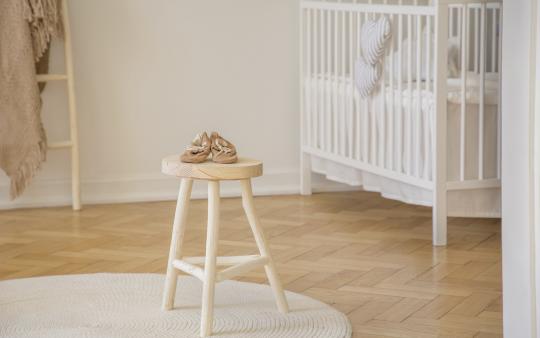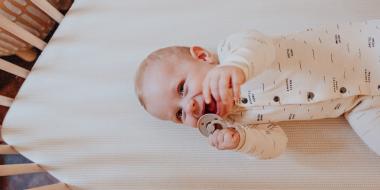Chemicals are everywhere in a child's life. If you have a new baby, chances are theirs is the most polluted room in the home as it’s often newly renovated and furnished. A few considerations before you decorate the baby's room will go a long way toward protecting your household from the most concerning toxins!
Go to the mattress!
Neither Canadian nor U.S. governments regulate cribs for VOCs, despite increasing scientific data about their long-term health effects. Indeed, according to the report Toxic Baby Furniture by Environment California Research and Policy Centre, one crib can off-gas enough formaldehyde to cause an entire house to reach background levels associated with increased risk of allergies and asthma. Similarly, the national limits on heavy metals in children’s furniture aren’t stringent, nor do they account for the sensitivity of kids’ developing organ systems. As research into the connection between chronic formaldehyde exposure and cancer continues, there is mounting evidence to suggest that long term exposure, even at low levels, can be problematic.
It's worthwhile to consider the mattress you plan to purchase, as many are made using polyurethane foam, a petroleum product that typically contains and off-gases various industrial solvents, such as toluene, benzene, and formaldehyde. Polyurethane foam is highly combustible and therefore is almost always treated with a chemical flame retardant which continues to be released throughout the life of the material, meaning that the mattresses won’t get safer over time. Some studies suggest that mattresses get significantly yuckier as they age because they also accumulate dust mites, bacteria, and mould.
Be particularly vigilant about greenwashing here because the terms “organic” and “natural” are not regulated in this industry and thus can be meaningless when it comes to finding a healthy mattress.
Something in the air
The air inside our homes, schools, and workplaces is on average two to five times more polluted than our outdoor air and has been linked to stillbirths, birth defects, SIDS, lower IQ, respiratory infections, asthma, neurological disorders, hormone disruption, cancer, and other life-threatening illnesses.
Among the home’s largest indoor polluters are furniture and finishes. Paint, wallpaper, carpeting, furniture, pressed wood, the glues that hold down flooring and tiles, PVC products, curtains, foam, permanent-press and fire-resistant fabrics all release—or off-gas—volatile organic compounds (VOCs), such as the known human carcinogen, formaldehyde.
Keeping the nursery safe and healthy
Two of the most effective ways to improve indoor air quality in your nursery cost nothing: opening windows to bring in fresh air and removing shoes so as not to bring in pesticides, lead, and other pollutants. Other smart moves:
- Choose no-VOC paints, water-based finishes, and natural materials not treated with flame retardants.
- Steer clear of carpeting as it off-gases VOCs and become a trap for heavy metals and mould.
- Choose all-wood furniture or buy vintage, where possible, as furniture off-gasses over time.
The best rule of thumb is: less is more! Less stuff means more clean air. Less time spent preparing the baby’s room means less toxin release from renovations. If you’re worried about what you’ve already done, you can speed up off-gassing by sealing the room, cranking up the heat, opening the windows and using a fan to help force the air outside.
A word about air filters
Be aware that some air filters do more harm than good. According to the Environmental Protection Agency, even good ones won’t clean the air or relieve asthma symptoms. Problematically, many air filters produce ozone, an irritant that can restrict lung function and trigger asthma, and can react with other common household products, such as air fresheners or cleaners. Air filters that rely on HEPA filters are better at trapping dust, pollen, and smoke without producing harmful side-effects.
Read next: Baby Care Products Expose Infants to Toxic Chemicals






